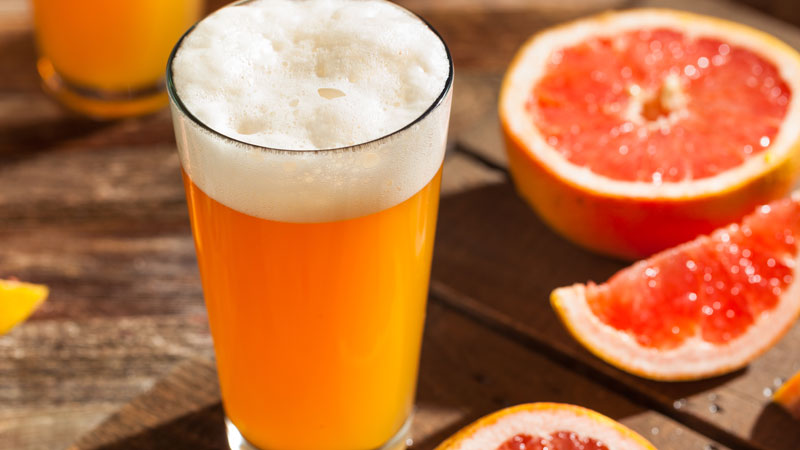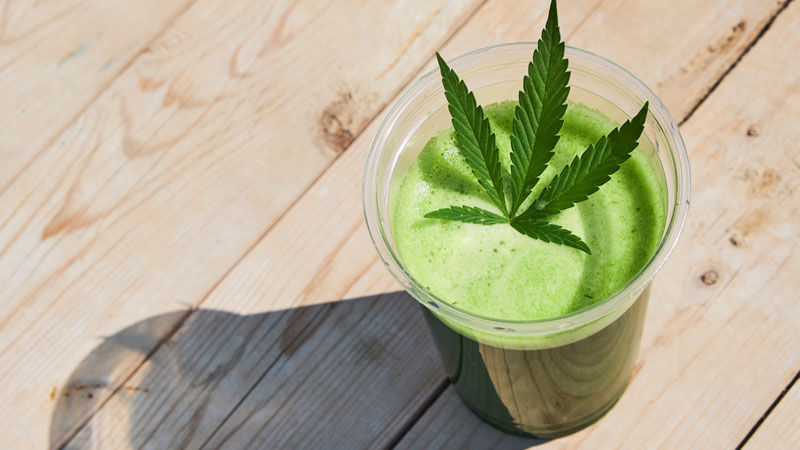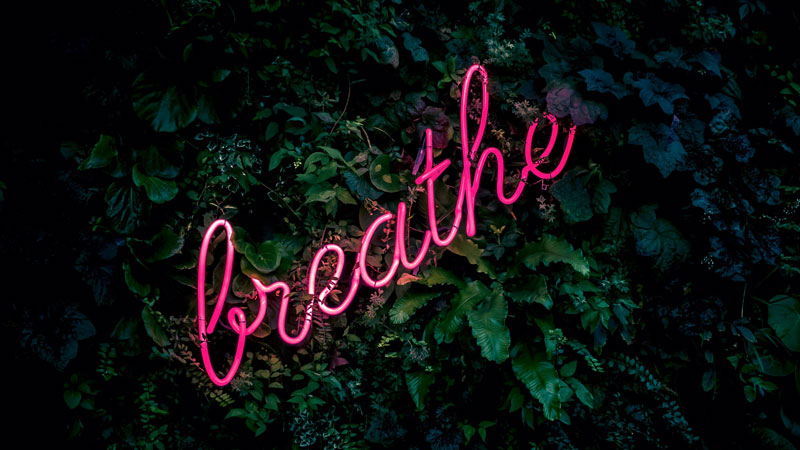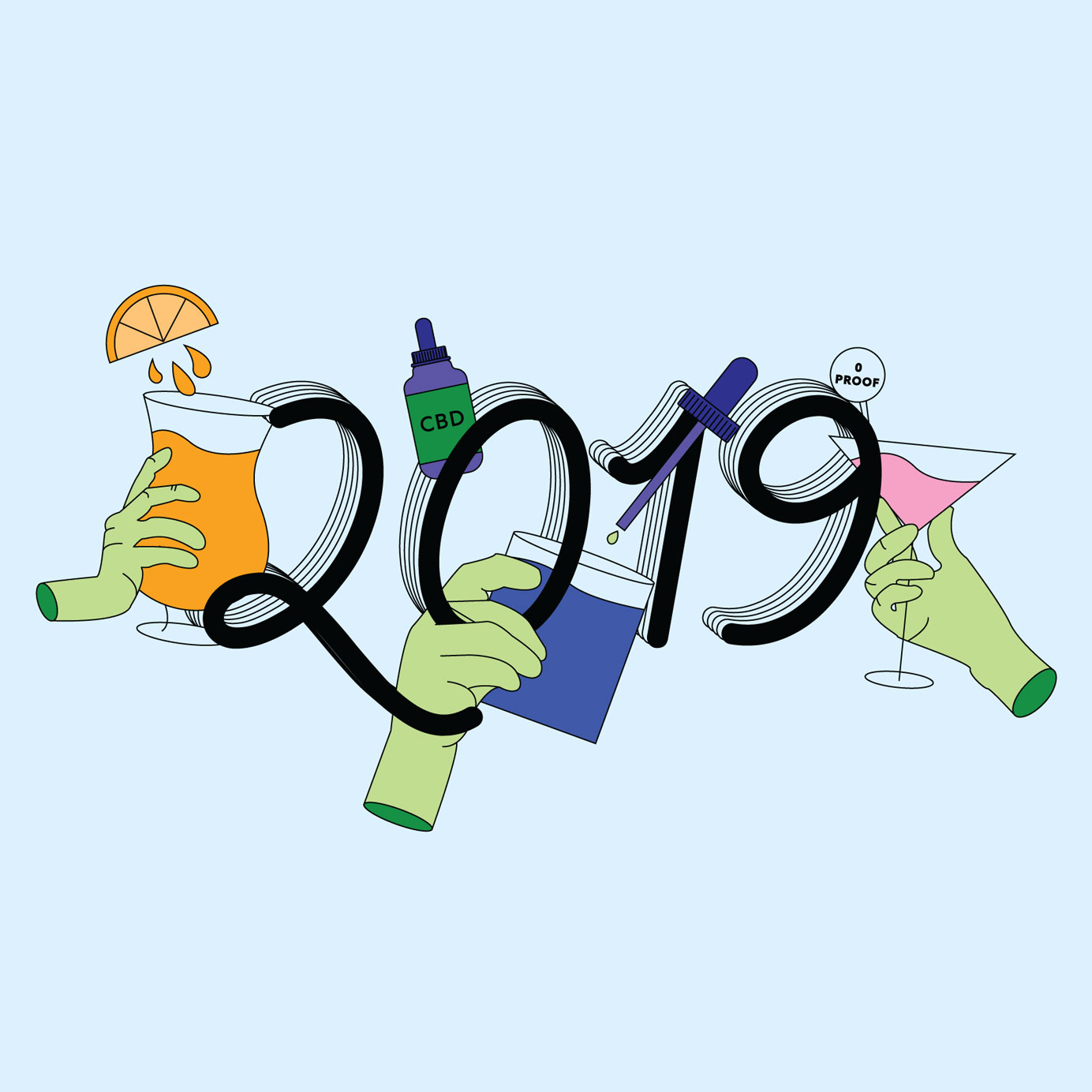As we raise glasses and turn gazes toward 2019, everyone at VinePair HQ is debating what we will see, think, and drink in the coming year. Will the bar industry successfully take on sustainability? Can craft beer weather a volatile economic forecast? How will somms stay relevant on and off the floor?
We’re calling it: 2019 will be a great year for beer, wine, and spirits. Here are eight top trends to watch.
Zero-waste cocktail lists will make us think outside of the straw.
Last summer, plastic straw bans proliferated at bars, restaurants, and coffee shops nationwide. Several hospitality professionals told VinePair the outrage might be part of a continuum: Straws were an accessible entry point to a larger, more meaningful conversation about conscientious consumption.
Sheesh, were they right. The James Beard Foundation has since launched its Waste Not initiative, a campaign and cookbook to help chefs and home cooks reduce food waste. Joseph Boroski created a “No Impact” bar program at NYC’s 18th Room, and Shawn Chen reuses citrus zest and coffee grounds at RedFarm in Manhattan.
“Sustainability in beverage is undoubtedly in the cards for bars everywhere,” Boroski said in an interview with Fortune. “I only see this movement getting more popular as consumers become more aware of how their choices collectively make a difference.”
Beer will continue its food waste efforts, too, with brands like Toast Ale, Crumbs Brewing, and Been a Slice expanding offerings brewed with surplus bread; and companies like Rise Products making flour out of spent grain.
Sour beers will get the subcategorization they need and deserve.
A diverse portfolio of beers currently resides under the catchall term “sour.” As kettle sours, fruited sours, spontaneously fermented wild ales, goses, and Solera beers continue to proliferate, how we talk about and categorize these beers will mature. After all, we don’t call all pilsners “crisps.” Beyond that, not all beers that are “funky” are sour.
Consumers might not immediately start using all the Brewers Association’s style names in casual conversation (“Pick me up a Leipzig-style gose, would you?”). But those in the industry will incorporate more geographic associations, as well as production methods. Just as retailers differentiate between West Coast and New England-style IPAs, and milk versus bourbon-barrel-aged adjunct stouts, we will start separating our Berliner weisses from our American wild ales.
This is already happening at breweries, taprooms, and restaurants like The Farm at Adderley in Brooklyn and The Dabney in Washington D.C. We expect to see it at Whole Foods, Wawas, and Krogers next.

Only the logical hybrids will survive.
From bourbon-barrel-aged wine, to breweries aging ales on grape must, to spiked seltzers, to CBD cocktails, hybridization is happening in every corner of the drinks industry. It makes a lot of sense: Contemporary consumers love customization, hate being pigeonholed, and, statistically, purchase beer, wine, and spirits interchangeably.
Of course, some of these crossovers are better conceived than others. In 2019 the market will correct itself. Rosé sour beers, for example, by brewers like Crooked Stave, will continue to thrive. Big Beer investors are rolling out boozy sparkling water brands left and right. CBD cocktails, especially prepackaged ones, will evolve and elevate. Bourbon- barrel-aged wine will continue to sell, whether we want it to or not; and so sommeliers and retailers need to rethink how to market to the predominantly young, male consumers buying these bottles.

That goes for genre-bending spaces, too.
The smartest hybrids in the business are neither canned nor bottled. Wine shops like The Royce in Detroit are transforming into drinking destinations, offering stylish bars where guests sip cocktails and vino by the glass. Brewpubs and honky-tonks are helmed by sommeliers with Michelin-starred résumés. Excellent wine bars, like High Treason in San Francisco, serve a full list of beer, cider, and sake alongside vino. In 2019, sommelier or cicerone certification will be less important than finding beverage directors who can think across categories and speak to all consumers.
Sommeliers will be everywhere.
As wine professionals become household names, we will see more brand extensions. Patrick Cappiello, Jeff Porter, Thomas Pastuszak, Bobby Stuckey, and Ryan Arnold have already created their own wine labels.
In February, Stuckey started selecting wines for American Airlines, joining such high-flying somms as Andrea Robinson, who works with Delta, and Doug Frost with United. “I think the wine industry is in front of more people than it used to be,” Stuckey said.
More somms will follow suit in 2019. Look for top wine pros’ branding on everything from wine labels to clubs to education to entertainment.
Neon will dominate design because we love nostalgia — and Instagram.
Neon was invented by a 19th-century British chemist and popularized at a pre-WWI French motor show. And yet, somehow, right now, nothing feels more utterly of the moment in America than neon signs in bars and restaurants.
Picture the vintage Vernor Coney Island sign hung outside Detroit’s critically acclaimed Flowers of Vietnam. Or the script reading “You earned it” at Austin’s lauded Half Step Bar. And at the newly opened Cha Cha Matcha in West Hollywood, L.A., you can sip a ginger turmeric matcha latte beneath a neon sign that says, “I Love You So Matcha.”
Neon will spread beyond metropolitan areas and into the mainstream in 2019 because it speaks to two contemporary obsessions: comfort-seeking nostalgia (Instant Pots and slow cookers, ahoy!), and Instagrammable interiors. No one is immune to the draw of neon — not even us.

If the economy turns, craft breweries will be in trouble.
The Federal Reserve forecasts less economic growth and more uncertainty in America in 2019, and predicts higher rates of unemployment come 2020 and 2021. In addition to wreaking havoc on financial markets in the short term, this could devastate the already perilous state of craft breweries in the year to come.
The majority of America’s 7,000-and-counting breweries have only existed in a booming economy. “Between 2008 and 2016, the number of brewery establishments expanded by a factor of six, and the number of brewery workers grew by 120 percent,” Derek Thompson wrote in The Atlantic in January 2018. “The source of these new jobs and new establishments is no mystery to beer fans. It’s the craft-beer revolution.”
Now, however, craft growth is slowing. If met with the predicted economic downturn, it could devastate a still-maturing industry.
This might explain why so many craft breweries have partnered with major food conglomerates in 2018. Recent odd couples include 2SP Brewing with Wawa, Blue Point with Taco Bell, and Harpoon with Dunkin’ Donuts. Expect to see more partnerships like these in the coming year.
Low- and no-proof cocktail lists will go national.
Wellness and aperitif cultures rose in tandem in 2018, and so the spritz was an exceedingly popular cocktail. (A multi-tiered marketing push from Gruppo Campari didn’t hurt its cause, either.) Low- and no-proof cocktails are the natural next step.
Younger consumers reportedly drink less than their preceding generations, and smart bars and restaurants that want to keep those dollars are allocating resources to creating low- and no-proof cocktails. We have already seen this happening at cutting-edge destinations like Polite Provisions in San Diego and Katana Kitten in NYC. Zero-proof bottled cocktails and non-alcoholic spirits like Seedlip are nationally available. In 2019, bartenders nationwide will put just as much effort into low- and no-proof cocktails as their full-strength equivalents.
This is driven by trends and economic potential. “The bar still gets to sell a somewhat pricey beverage and your sister-in-law can keep her pregnancy secret,” Tara Nurin writes in Forbes. Everybody wins.
